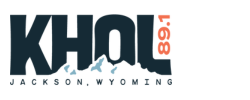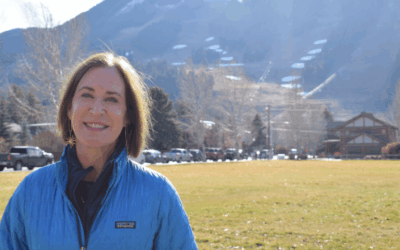U.S. Transportation Secretary Pete Buttigieg visited Wyoming on June 17. He’d come to work with state officials on the collapse of Teton Pass, which Gov. Mark Gordon declared an emergency. Buttigieg also visited Cheyenne, where he saw progress on Highway 30, which has undergone various improvements to increase safety and efficiency.
Buttigieg, a former U.S. presidential candidate, was scheduled to visit Cheyenne in March. But the collapse of the Francis Scott Key Bridge in Baltimore meant he had to reschedule. During his recent visit, he spoke with Wyoming Department of Transportation (WYDOT) officials about opening a temporary detour while Teton Pass is rebuilt. In this exclusive interview, he talked about funding for roadways, infrastructure, national parks, electric vehicles, the Teton Pass collapse and the schedule for its rebuild.
Editor’s Note: This interview was edited for clarity and brevity.
David Dudley: WYDOT says that the rebuild will be done sometime around November. How confident are you in that deadline?
Pete Buttigieg: Certainly we defer to WYDOT in terms of the timeline and the project plans. Our role is to make sure that we dismantle any barriers that might be standing in their way – bureaucratic barriers, funding barriers, anything like that – and we want to be able to provide technical assistance too.
DD: What happens if it’s not up and running by winter?
PB: We see the economic impact of this every day from the perspective of the tourism economy and, most importantly, from the perspective of people who now have to go an hour and a half out of their way sometimes just to get to work, or to where they need to be. It really is something that’s creating a major challenge for many people each passing day and that’s why there’s a sense of urgency about getting it fixed.
DD: Would you consider this to be climate related?
PB: I don’t know everything that went into the weather conditions that caused this incident. But what I will say is that we are certainly seeing more and more of this sort of thing in the face of climate change. That’s true more broadly across our transportation systems, whether it’s slides like the one that took out a critical stretch of I-70 in Colorado a couple of years ago following a wildfire that contributed to the loosening of the soil, or heat waves that made it necessary to shut down public transit in the Pacific Northwest because cables were in danger of melting.
Every part of the country is experiencing these climate impacts and their transportation systems [are being hit] hard.
DD: What can your department do to help with that?
PB: There are really two things that we’re doing to contend with these climate challenges. One is to try to make our transportation systems cleaner and greener. We know that there are many things we can do to reduce the pollution that comes from transportation, whether it’s making sure that there are more good affordable options for electric vehicles, or making sure that there’s good public transit. But also, no matter how good we get at that work, the reality is many of these climate impacts are already here.
We’re also funding resilience projects at a scale that’s never been done before, federally. The Biden infrastructure package includes about $7 billion for a program, which is specifically for making resilience improvements on pieces of our transportation system that could be at risk because of climate or other threats.
DD: How is your department thinking about reducing or mitigating congestion on those roads?
PB: We are funding a number of roadway improvements in and around our national parks and getting that right can contribute to clean air by making sure that there is less congestion, less idling. Many people driving on roads that get busy – in Yellowstone, for example – know what it’s like when it goes to a crawl. Not that we want to be speeding through those areas, but you also don’t want to be stuck. It’s also why we’re building charging infrastructure across the country by the end of this decade. The president’s goal is to have about 5,000 chargers across the country. That includes chargers that serve federal lands and national parks.
DD: On the subject of national parks, they currently have a backlog on maintenance. Why are we paying for critical infrastructure with competitive grants?
PB: What we’ve done with the infrastructure package is to increase both the formula dollars that are going out around the country and competitive grants that allow additional supplemental funding. We’ve got a backlog that is built up over, in my view, about 40 years of under investment. We’re finally changing that. Thanks to the infrastructure package, that backlog is getting smaller rather than larger, but that doesn’t mean that it can be done overnight and we still have to make tough prioritization decisions about where those dollars are going to go first.
My hope is that we can demonstrate enough results out of this five-year infrastructure package that there will be interest in continuing robust funding for the future.
DD: The federal government is promoting the use of electric vehicles. They are a little bit heavier than those that run on gas. I wonder what that means for the integrity of roads?
PB: One thing that we are evaluating is the pressure that heavier vehicles can put on roadways. This is true both with the profile of electric vehicles – although battery technology is still evolving and the battery is part of what creates that weight – and just the fact that the American consumer has increasingly opted for larger vehicles than you would have seen a couple of decades ago.
At the same time, we’re investing a lot of research in stronger paving materials. Maybe not the most glamorous subject but one that’s going to be very important so that we can get a better value for our taxpayer buck and make sure that our roads are more durable and more sustainable. Many of these more durable road materials are also better able to withstand some of these climate challenges that we’re facing and some of them even have the quality of being able to embody carbon and may be part of the solution to getting carbon out of the atmosphere.
DD: Do you think that coal could eventually be used in those roads?
PB: We’ve certainly seen some interesting technologies being developed that make use of coal as an input to those materials. We’re funding projects at university transportation centers and several locations around the country that I hope will be able to yield promising results. It’s early for some of these things to be tested and it can take a while to see what weather and the passage of time will do to them. But, believe it or not, we actually have facilities that do things like run a wheel at pressure over a simulated piece of road thousands or millions of times to accelerate that process so we can get a sense of how these materials hold up.
DD: Wyoming has rejected EV charging infrastructure funds because of the stipulations that there be a charger every 50 miles. In the state right now, there are some areas that don’t have gas stations for every 50 miles. I wonder how you can work with Wyoming to find a solution to that problem.
PB: One thing that Gov. Gordon has raised is the uniqueness of Wyoming, in terms of just how big these stretches of roadway are and the fact that a solution in a spread out rural state like this is going to be different than other parts of the country.
We’re conscious that a one-size-fits-all approach is not going to work. It doesn’t work for Wyoming or for Alaska or for Manhattan. Every part of the country has its own needs and we’re in good dialogue with the governor and with WYDOT about how to make sure that we apply that common sense here in this program.
This reporting was made possible by a grant from the Corporation For Public Broadcasting, supporting state government coverage in the state. Wyoming Public Media and Jackson Hole Community Radio are partnering to cover state issues both on air and online.






